Peter Ireland – 27 October, 2011
It's beginning to dawn that in photography's case what's worth studying is often the opposite of art's quest for the unique and the special. Why the carte-de-visite became so popular, how they were shared and housed, and who was driving this phenomenon are powerfully illuminating frames around these humble pictures. Merely social history? We shall see.
Wellington
The Victorian Album: the Feminine and the Personal
Curated by Sandy Callister
8 October - 13 November 2011
Halfway down the stairs separating the two exhibition floors of the Athfield-designed Adam Art Gallery there’s a medium-sized gallery off to the left, part of an older university building incorporated into the Adam, a more conventional space than the newer modernist ones and differing conspicuously in its lack of any natural light. In unitary Adam shows that spread throughout the building, material assigned to this gallery often seems cramped and ill at ease. But for more focused, discrete exhibitions of smaller-scale material requiring close attention such as this one, it’s perfect.
This year the Adam programme has centred on the notion of collecting, a series of dove-tailing, over-lapping shows that refresh and continue the general theme’s momentum. The Victorian Album is part of a sequence of exhibitions under the general heading of in camera: a project series around and about collecting, all staged within this smaller space, and has been curated by Sandy Callister, this year’s Stout Research Centre Fellow, someone better known until now for her diligent research and intelligent writing about photography rather than as a curator. That “in camera” could be something of a clever pun, the room itself resembling the dark chamber of a traditional camera’s innards, a matter so eloquently meditated on by Justin Paton in his catalogue essay Black Box, published by McNamara Gallery Photography in 2002 to accompany the Aberhart show The Interior: 44 photographs 1981-2002.
The collecting Callister addresses focuses on the carte-de-visite and the albums devised to house them. The carte-de-visite is a 19th century phenomenon still likely to be the province of specialist interest, so it’s probably necessary to describe it. Its origins were in the visiting card that evolved from rules of etiquette in 17th century Europe and remained a dominant feature of polite society’s social interaction for almost three centuries. With technological advances allowing for cheap reproduction in the mid-19th century these cards - a standard 100mm x 64mm - began bearing photographic portraits, which changed the whole nature of the tradition: the cards became less about the etiquette of visiting than about constructing genealogies, as well as being, for us, a key moment in the emergence of celebrity culture where the concept of “image” has moved depiction way beyond mere “picturing”.
These seemingly prosaic studio portraits - amounting to millions between 1860 and 1900, the practice, unsurprisingly, accruing the description “cardomania” - have tended to be overlooked by art historians because their sheer number eliminates any uniqueness and their conventional poses suggest nothing special. It’s beginning to dawn, however, that in photography’s case what’s worth studying is often the very opposite of what applies in art’s quest for the unique and the special. Why the carte-de-visite became so popular, how they were shared and housed, and who was driving this phenomenon are powerfully illuminating frames around these humble pictures. Merely social history? We shall see.
One of Modernism’s more enduring precepts was that works “should speak for themselves” with any circumstantial evidence see as contaminating the abstract purities of art’s various manifestations. It’s one of Postmodernism’s many failures that this precept remains a virus in our perceptual apparatus. In his introduction to 2007’s British Vision: observation and imagination in British art 1750-1950, Robert Hoozee lists some of the factors contributing to that tradition’s particular character: “…new technologies, urbanization, the rise of a new middle class, the climate, isolation, Protestantism and the limited impact of institutions like the Academy”. More social history? Well, maybe. (Incidentally, British Vision is one of the first major art histories to give equal attention to photographers alongside “real artists”, something unthinkable even a decade ago.)
Callister’s narrative focuses on a domestic practice largely involving women - both these elements missing until recently from the master narratives of conventional historical study. Yet she fashions from this genealogy construction intriguing insights that illuminate the much wider subject of the Victorian institutionalisation of the family, a complex business involving destiny, empire and control. Public gallery photographic exhibitions these days are almost invariably solo shows, and one often has the sense of looking through the wrong end of a telescope: large claims dwindling to small achievements. Callister, by comparison, looks through the right end, and from small things makes large discoveries.
Like the chicken and the egg, it’s hard to know which came first: large Victorian families or the sense of requiring the numbers to staff an empire. There was no question, though, about a driving sense of destiny: a fitness to rule and a mission to spread European civilisation. Previously, ruling had been the job of monarchs, and the genealogies they depended on for legitimacy and maintaining alliances began to be replicated by the rising middle class, not just as new rulers but because their ruling entailed a global dispersal of kin, and the carte-de-visite came along just at the right time to add a powerful visual component to this vast web of connection.
The model for the Victorian family was, of course, Victoria and Albert’s - themselves incidentally, great enthusiasts for the new medium of photography - and cartes-de-visite images of them sold phenomenally, and there were few albums without their representation. The dynamic shifts slightly sideways here, from family to fame, and the royal family was soon joined between those stiff covers by prime ministers, famous generals, successful authors and musicians and, as the slope got steeper, actresses and other entertainers. The cult of celebrity was on its way.
Callister has included nine albums, spread through two vitrines, from three NZ Historic Places Trust properties in Auckland: Alberton (the Kerr-Taylors), Ewelme Cottage (the Lushes) and Highwic (the Bucklands). Two of the albums are closed to show their elaborate covers, but the seven open demonstrate a consistent project of genealogy construction, the pages often decorated by watercolours of flowers and native flora, all these objects supported by concise and usefully informative labelling.
Exchange became an activity central to album making too. Those dispersed kin sent back not only cartes of themselves but of their own men of fame. And not just the famous either, but the exotic, so that types of natives soon joined the flow of images circling the globe by mail: all those subjects of empire, from Indians, Africans and Chinese to Aboriginals and Maori.
Callister has drawn on the W J Harding and Samuel Carnell photographic collections at the Turnbull Library for the 25 modern prints pinned to the gallery’s walls. These portraits were made for cartes, but have been reproduced at full-plate size - about 5 times the size of the standard carte-de-visite. One might quibble at this historical dislocation, but it would be a pedantic complaint. Only 3 or 4 of these portraits have been published before, so in this respect the show’s a revelation. Both Harding and Carnell were exceptional image-makers - the latter particularly (a great artist, barely known) - and this parade of female portraits, Pakeha and Maori, alone makes a visit to this exhibition worthwhile and proves, yet again, the extraordinarily vivid power of 19th century photographic portraiture. You may freshly share, in that dark room, a sense of spooky alchemy that no painted portrait comes within a bull’s roar of emulating.
There’s something unsettling about the public galleries’ consistent promotion of the solo photographic show, a complicity in a career construction that’s such a feature of the contemporary art world, a dallying with the cult of celebrity that it often deigns to despise. Callister’s project centres not on promoting photographers but on examining photography, and in doing so she gently reminds us of that great global tribe of images that in their kinship returns us to an enduring family, away from fleeting fame.
Peter Ireland
Recent Comments
David Cauchi
Uh huh.
John Hurrell
'Cuse me Peter M. - you misunderstand my point. You don't know what it was that I removed, and I ...
peter madden
"I dont want the front page cluttered up with obvious nonsense." oh the irony and how much some blogs defeat ...
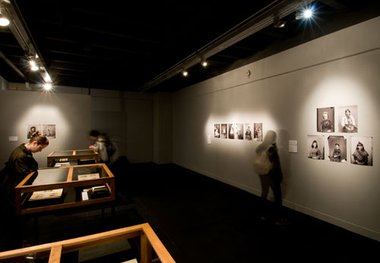
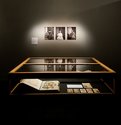


 Advertising in this column
Advertising in this column Two Rooms presents a program of residencies and projects
Two Rooms presents a program of residencies and projects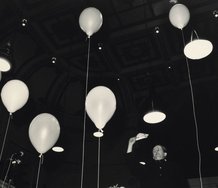
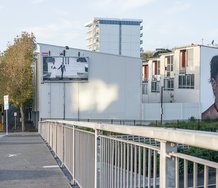
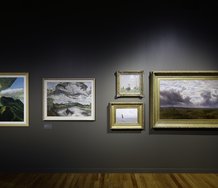

This Discussion has 5 comments.
Comment
David Cauchi, 5:15 p.m. 28 October, 2011 #
I could comment on this but I won't. My comments get surreptitiously edited or arbitrarily deleted by an extremely heavy hand. It is as if the target audience were 15 year old schoolkids or something. And what kind of discourse is that?
Grumble moan.
John Hurrell, 1:15 a.m. 29 October, 2011 #
Serious comments on serious issues I would never touch, David, but insessant foolery that takes up good space I will edit - esp if it stops the site being user friendly. Incidentally I reluctantly intervened in two cases. I don't want the front page cluttered up with obvious nonsense.
peter madden, 7:44 a.m. 30 October, 2011 #
"I dont want the front page cluttered up with obvious nonsense." oh the irony and how much some blogs defeat their own banners with secret self serving audiance agenda. Didnt you once say you never tell your writers what to write? but you will edit capriciously? Pity the heavy hand of your editing isnt more self reflective i say. Lets face it this blog site can never reach the lofty hights it intends because of percieved taget audiance and an editor in cheif that lauds it from up high. I like others will always visit this site because i love nz art it doesnt follow that i love the reviews . Indeed i deeply wish some would take their job a little more seriously....
John Hurrell, 9:27 a.m. 30 October, 2011 #
'Cuse me Peter M. - you misunderstand my point. You don't know what it was that I removed, and I can tell you it was not serious content. It was a flippant joke that prolonged an exceedingly long thread that had dragged on far too long. It was precisely because I do take my job seriously that I removed it and another (from someone else) that followed hot on its heels.
David Cauchi, 3:44 p.m. 1 November, 2011 #
Uh huh.
Participate
Register to Participate.
Sign in
Sign in to an existing account.